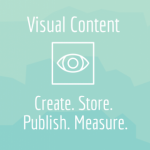Unveiling our New Copyright Registration Guide for Photo Agencies
US Copyright Registration: Filling the ‘Guidance Vacuum’
Registering works with the US Copyright Office is something on the subject of which the majority of photographers and photo agencies don’t need much convincing, the benefits being overtly attractive: for a slim sum, you can ensure full legal protection for a substantial group of images. At the very least, the USCO ‘stamp’ can help to deflect potential infringements and enable more effective action against actual infringements. At most, the seal of protection means you can be remunerated for up to $150,000 for infringements deemed to be willful.
But for some, upon beginning the registration process itself, the seemingly-straightforward activity swiftly transforms into something of a bureaucratic labyrinth, punctuated with confusing signage, administrative hurdles and a fair few U-turns.

The ‘standard’ registration procedure – one photographer registering a single work of their own creation – is relatively painless, there being a decent amount of sound guidance to be gleaned from the USCO website and various dedicated bloggers. But if your situation is in any way ‘unconventional’ i.e. you’re an agency trying to register the works of one of your contributors, then the road can be bumpier to say the least.
In fact, we barely found any advice specifically addressing the needs of photo agencies – somewhat surprising when you consider that agencies are arguably better positioned to register works than their contributors, being better resourced, with often more sophisticated databases, and their own legal departments.
Agencies – you can also register
To fill this guidance vacuum, we set about making our own Copyright Registration Guide, especially geared towards photo agencies registering works on behalf of their contributors. The guide is laid out in 3 parts: a breakdown of the basic criteria for registering, a step-by-step ‘walk through’ of the actual registration form itself, and a run-down of the post-application procedure. The idea is to save time, a good deal of head-scratching induced by attempting to single-handedly piece together the registration puzzle.
The full guide is an open resource for PicScout customers, but is also available on request, by emailing ask@picscout.com.
Registration done the smart way
Being able to comfortably navigate the application process solves one major problem, but another often-cited obstacle remains: the matter of choosing which images to register in the first place. In an ideal world, you would register everything, just to be on the safe side. But realistically, unless you own a small archive, registering 10s of thousands of images is probably not going to be financially feasible, despite the fairly modest filing fee. So, the trick is to somehow figure out what’s most worth registering. Working this out using a method other than a system of ‘hunches’ requires some targeted data analysis, using reports of usage volumes generated over time. Most photographers and agencies don’t have the data to generate these insights themselves, which is where our analytics steps into the picture.
One of the free perks of the Copyright protection service we offer is that we can advise our customers – using analytical insights – on which images to prioritize for registration. With this information, customers can rest assured that they’re getting the most out of their investment.
More ways to protect your content
Copyright Registration is the highest official protection you can achieve, but there are other ongoing steps you can take to ensure your rights are being protected. Our Copyright Protection service is a proactive way to protect your content, enabling you to track your images online and be remunerated for unauthorized usages. You can also use our digital badges to let others know that your work is protected by our copyright compliance experts and by PicScout technology.





